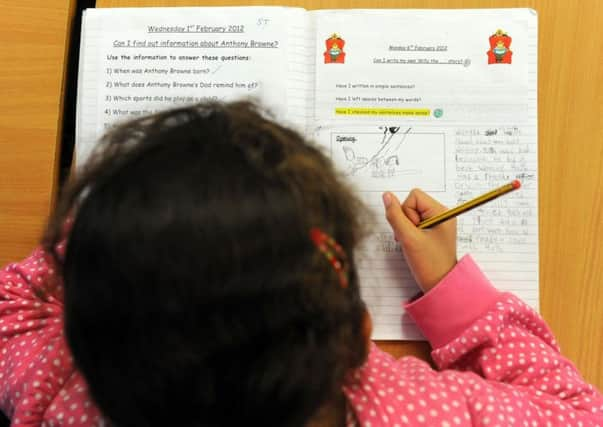Praise for SATs pupils as national average beaten


Wigan’s year six pupils showed improvements in every category in the tests sat after key stage two and were again ahead of the national average.
However, more than one in three children in the borough still did not reach the Government’s expected standards, with 65.8 per cent achieving all three passes in reading, writing and maths.
Advertisement
Hide AdAdvertisement
Hide AdThis compares to the national average of 61 per cent of 10 and 11-year-olds meeting the level ministers expect by the time they go to secondary school.
Despite the ongoing controversy around the difficulty of some of the tests Wigan Council chose to focus on the positive news and congratulated pupils and teachers across the borough for their hard work to achieve above-par results.
Coun Jenny Bullen, portfolio holder for children and young people, said: “Congratulations to all those who have performed so well in their key stage two SATs and have helped put Wigan borough once again ahead of the national average.
“These results are a testament to their hard work along with the vital support from their families, fantastic teachers and support staff at schools across our borough.”
Advertisement
Hide AdAdvertisement
Hide AdProvisional figures show the pass rate in reading tests was 74.3 per cent, up by 5.3 per cent from last year’s results, while maths saw a 5.2 per cent rise on the 2016 figures with a pass rate of 79.3 per cent.
Writing tests had a pass rate of 79.2 per cent, a 2.2 per cent improvement on last year’s figure of 77 per cent.
The overall pass rate is also an 8.8 per cent boost on the figures achieved in the exams 12 months ago.
Nationally scores improved across the borough in the second year since the tests were radically changed.
Advertisement
Hide AdAdvertisement
Hide AdThe reading pass rate of 71 per cent was up from 66 per cent in 2016 while 76 per cent of pupils passed writing compared to 74 per cent last year and three quarters of pupils reached the desired level in maths, a five per cent rise from 2016.
Nearly half a million pupils sat the tests in May with just under 40 per cent across the country not meeting the Government’s expected levels.
Schools standards minister Nick Gibb hailed the results, saying pupils were being better prepared for further achievement, but the National Association of Head Teachers (NAHT) said the results should be taken with “a pinch of salt” and not as a measure of a school’s standards.